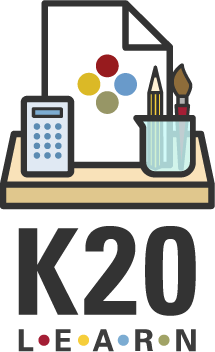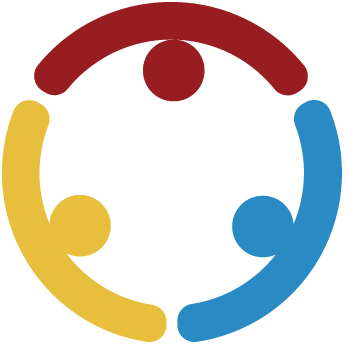Summary
In this lesson, students will investigate the qualitative characteristics of waves. They will explore how an objects material impacts wave behavior.
Essential Question(s)
What is a wave?
Snapshot
Engage
Students make observations about waves by watching a video of a trumpet played into a Ruben’s Tube.
Explore
Students investigate wave behavior and the impact of different materials on the behavior.
Explain
Students identify and define the parts of a wave and their behavior.
Extend
Students explain the importance of understanding different materials impact on sound by designing and modeling new headphones.
Evaluate
Students reflect on their learning by summarizing it, connecting it to their lives, and identifying questions they still have.
Materials
Lesson Slides (attached)
Waves Stations handout (attached; one per student; print two-sided)
Waves Stations Instructions document (attached; one per class; print one-sided)
Wave Notes handout (attached; one per student; print two-sided)
Designing for Sound handout (attached; one per student; print one-sided)
Triangle-Circle-Square handout (attached; one per student; print one-sided)
Preparation
Prior to the lesson, print out the Waves Stations Instructions and gather the materials needed for each station. Consider placing the instructions sheets in a page projector or sign holder for reusability. Organize stations so that students have room to conduct the investigations. Place the instructions and the materials at each station.
Engage
10 Minute(s)
Introduce the lesson using slide 2 of the attached Lesson Slides. Display slide 3 to share the essential question and go to slide 4 to review the lesson objectives with students.
Move to slide 5 and explain to students that they will be watching a video about a device called a Ruben’s Tube. Play the video on the slide. Move to slide 6. Ask students to turn to an Elbow Partner and discuss what they saw in the video. Invite partners to share what they saw with the whole class. Consider writing down some of their observations on the board or a large piece of paper.
Explore
50 Minute(s)
Display slide 7 and pass out the attached Wave Stations handout to each student. Inform students they will rotate around the classroom to investigate waves at several different stations.
See below for a brief description of each station:
Tuning Forks: Students listen to tuning forks and observe how they affect water.
Prisms: Students use a prism to split light and see a rainbow.
Water Waves: Students create water waves (ripples) and observe wave convergence.
Ruler: Students create mechanical waves and observe the behavior of the end of a ruler.
Straws: Students investigate how changing the length of a straw alters the sound it produces.
Cup Sounds: Place a metronome or bluetooth speaker on a table. Student use three cups of different materials (paper, Styrofoam, ceramic) to cover the metronome/speaker then record the difference between the sounds.
After the stations, facilitate a discussion with students about what they saw and heard during the investigations. Focus the discussion on the shapes they saw in waves and how different materials or different lengths impact sounds.
Explain
20 Minute(s)
Pass out the Wave Notes handout to each student. Use slides 8–9 to help students fill out the information on their notes. Explain to students the different parts of a wave. Have students write down the name and definition of each part of the wave. Instruct students to draw and describe the different wave behaviors. Explain why some waves need a medium to travel through while light waves don’t.
Move to slide 10. Ask students to turn to the back of their Wave Notes handout. Have students work with their table to determine which lab stations best demonstrated each wave behavior. Once students have determined which station represented that behavior, they will write down their evidence or observations of the station to support their claim.
Display slide 11 and remind students about the video that they watched in the beginning of the lesson, The Ruben’s Tube. Replay the video for students and pause it when the waves appear. Ask students if they can identify the different parts of a wave from the video. Display slide 12 and introduce the I Think / We Think strategy. Ask students to explain what medium the trumpet’s sounds travel through to create the wave of fire. Invite students to volunteer their ideas.
Extend
20 Minute(s)
Display slide 13 and pass out the Designing for Sound handout to each student. Explain to students that they will be imagining themselves as designers of new headphones. Ask them to consider why it is important that they understand how the materials they plan to use for the headphones affect sound waves. Explain to students that they will draw a model of the headphones, illustrating how the materials impact the waves’ behavior.
Evaluate
10 Minute(s)
Pass out the Triangle-Square-Circle handout to each student. Move to slide 14 and introduce the students to the Triangle-Square-Circle strategy. Instruct students to write three things they learned inside the triangle, a connection they made to their life in the square, and two questions they have in the circle.
Resources
Alves, M. (2023, April 15). Tubo de Rubens [Video]. YouTube. https://www.youtube.com/watch?v=9EQAYUrJItc&list=RD9EQAYUrJItc&start_radio=1
Cabrera, A. (2018, July 17). Ruler. [Illustration]. Noun Project. https://thenounproject.com/icon/ruler-1892595/?utm_source=nounproject&utm_campaign=icon_match&utm_content=match_drawer
Fernan, A. (2024, November 11). Cups. [Illustration]. Noun Project. https://thenounproject.com/icon/cups-7496357/
Fruzza, L. (2024, May 16). Prism. [Illustration]. Noun Project. https://thenounproject.com/icon/prism-6892663/
K20 Center. (n.d.). Elbow partners. Strategies. https://learn.k20center.ou.edu/strategy/116
K20 Center. (n.d.). I think / we think. Strategies. https://learn.k20center.ou.edu/strategy/141
K20 Center. (n.d.b.). Triangle-square-circle. Strategies. https://learn.k20center.ou.edu/strategy/65
Rizki Utami, N. (2025, February 9). Straw. [Illustration]. Noun Project. https://thenounproject.com/icon/straw-7656315/
Soon, M. (2025, September 13). Petri Dish. [Illustration]. Noun Project. https://thenounproject.com/icon/petri-dish-8083713/
Wahhab, A. (2018, March 19). Tuning Fork. [Illustration]. Noun Project. https://thenounproject.com/icon/tuning-fork-1648804/



